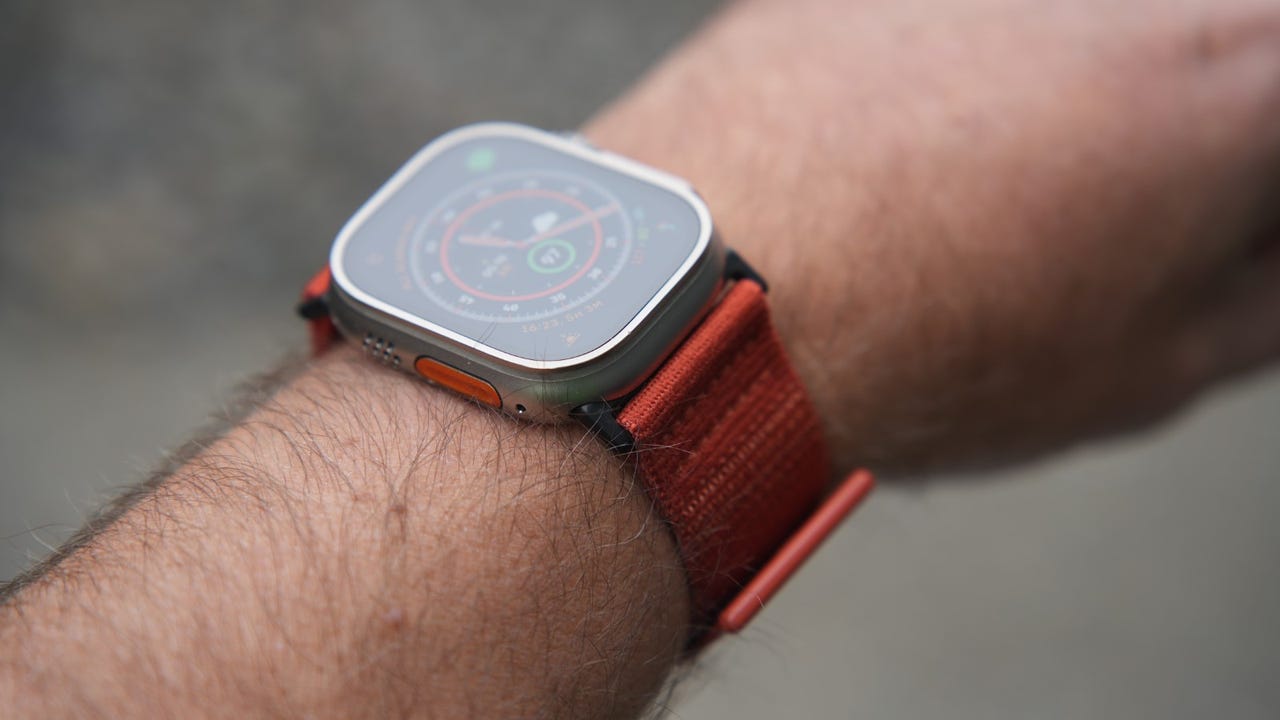'ZDNET Recommends': What exactly does it mean?
ZDNET's recommendations are based on many hours of testing, research, and comparison shopping. We gather data from the best available sources, including vendor and retailer listings as well as other relevant and independent reviews sites. And we pore over customer reviews to find out what matters to real people who already own and use the products and services we’re assessing.
When you click through from our site to a retailer and buy a product or service, we may earn affiliate commissions. This helps support our work, but does not affect what we cover or how, and it does not affect the price you pay. Neither ZDNET nor the author are compensated for these independent reviews. Indeed, we follow strict guidelines that ensure our editorial content is never influenced by advertisers.
ZDNET's editorial team writes on behalf of you, our reader. Our goal is to deliver the most accurate information and the most knowledgeable advice possible in order to help you make smarter buying decisions on tech gear and a wide array of products and services. Our editors thoroughly review and fact-check every article to ensure that our content meets the highest standards. If we have made an error or published misleading information, we will correct or clarify the article. If you see inaccuracies in our content, please report the mistake via this form.
Apple Watch Fall Detection: How and why to enable it

The Apple Watch has grown over the years. It's gone from a wrist-worn device for monitoring notifications and checking smaller versions of your favorite apps to a health and fitness device that measures and monitors all sorts of metrics and data points.
When it comes to health, Apple continues to add more features that provide peace of mind, should you be in a car accident, have any sort of irregular heartbeat, or even accidentally fall.
Also: The best Apple Watches
It's that last feature, Fall Detection, I'm going to show you how to enable it. If you think it's already turned on, I'll show you where to double-check that it's always monitoring for a fall, instead of only working during a workout -- a lesson I learned while working on this very article.
How to enable Fall Detection on your Apple Watch
What you'll need: In order to have Fall Detection available on your Apple Watch, you'll need one of the following Apple Watch models:
- Apple Watch SE
- Apple Watch SE 2
- Apple Watch Series 4
- Apple Watch Series 5
- Apple Watch Series 6
- Apple Watch Series 7
- Apple Watch Series 8
- Apple Watch Ultra
In addition to having one of those compatible Apple Watch models, you'll also want to make sure your Watch is running the latest version of WatchOS. At the time of writing this post, that's WatchOS 9.4.
Review: Apple Watch Ultra: Tougher than the Tough Mudder
Finally, Fall Detection is only available for Apple Watch owners 18 years or older.
1. Open the Apple Watch app on your iPhone
You can technically turn on Fall Detection on your Apple Watch, but doing it on your iPhone is quicker and easier.
On your iPhone, open the Apple Watch app and then scroll down and select Emergency SOS from the list of options.
2. Turn on Fall Detection
I recommend reading through all of the options on this settings page to learn about the multiple ways your watch can get you help in the event of an emergency.
Also: The Apple products you shouldn't buy this month
As you work your way down the page, eventually you'll come across Fall Detection. Slide the switch next to it to
the On position.
3. Decide if you want it always on or only during workouts
When you first set up your Apple Watch, you're asked to enter some personal and health information, such as your birthdate. As it turns out, your age plays a big part in the default setting for when Fall Detection is actively monitoring for a fall.
If you're 55 or older, the setting defaults to always on. This means the Apple Watch will detect a fall, regardless of what you're doing. If you're between 18 and 55, however, your Apple Watch defaults to only monitoring for a fall when you're working out.
Also: How to set up Focus modes on your iPhone (and say goodbye to distractions)
I wrongly assumed that it defaulted to always on for everyone, and for several years now have been under the impression my watch would call for help if I fell.
The default settings are likely to help eliminate false alarms for those who are younger and less likely to be severely hurt by a fall.
FAQs
Why should I turn on Fall Detection?
For me, this is a simple answer: Peace of mind. Accidents happen. You can fall off a ladder or bike, trip over a curb… the list goes on. And if you're alone and unconscious, you'd surely appreciate an automated way of getting you help. At least I know I would.
Also: How to find out if an AirTag is tracking you
Since switching my Apple Watch over from fall detection turned on only during workouts to always on, I've had one false alert. I was horseplaying with my kids, and a hard bump against my wrist as we were messing around must have been enough to trick the watch.
It took a couple of seconds to dismiss it and go back to what I was doing. I'm willing to deal with the occasional false alarm if that means there's a higher chance I can get help in a real emergency.
What happens if I fall?
When your watch detects a fall using the sensors and software inside your Apple Watch, you'll feel several taps on your wrist, hear an alarm, and see an alert on your watch's display asking if you're alright. You can dismiss it by tapping "I'm OK" on the screen, selecting Close on the screen, or pressing your Watch's Digital Crown.
Also: How to record a call on your iPhone
As long as you're moving, your watch will wait for you to answer the alert instead of calling for help. However, if your watch doesn't detect any movement for one minute, it will automatically call emergency services and play an audio message, letting the operator know you've fallen and providing your location.
When the call is placed, it will also send a message to anyone you've added as an emergency contact letting them know you fell and that emergency services have been contacted.
How do I turn on Fall Detection using my Apple Watch?
To turn on Fall Detection directly on your Apple Watch, you'll need to open the Settings app and then select SOS > Fall Detection.
